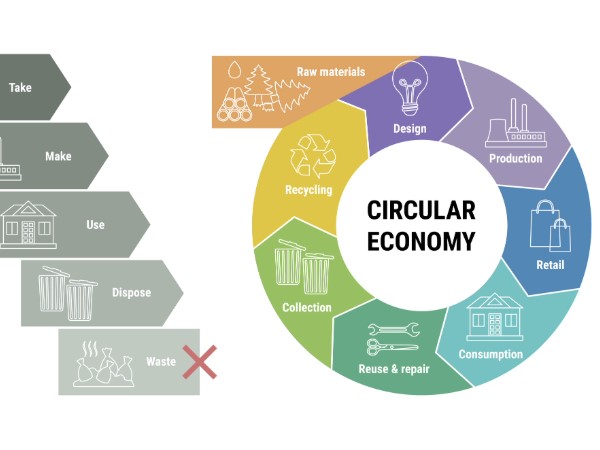
The National Recycling Strategy: Part One of a Series on Building a Circular Economy, is the initial installment in a series from the Environmental Protection Agency. It is dedicated to cultivating a circular economy (as opposed to the grey “Linear Economy” pictured at left) and zeroes in on fortifying the domestic municipal solid waste (MSW) recycling system in the United States. This plan underscores strategic goals and actions driven by stakeholders, corporations, NGOs (non-governmental organizations), and community-based organizations, alongside input from federal agencies, states, tribes, and local governments.
Acknowledging the hurdles facing the current U.S. MSW recycling system, including confusion over recyclable materials, outdated infrastructure, challenging markets, and diverse performance measurement methodologies, the strategy builds upon the efforts initiated under the 2019 National Framework for Advancing the U.S. Recycling System.
However, the strategy recognizes that enhancing MSW recycling alone isn’t the sole path to a circular economy. The broader toolkit involves endeavors beyond recycling, such as product redesign, source reduction, and reuse. The inclusive scope of U.S. recycling efforts extends beyond MSW to encompass materials like electronics, textiles, cement, concrete, and food waste, with future strategies poised to delve into these areas.
A pivotal aspect of the 2021 National Recycling Strategy is its commitment to implementing a circular economy approach that prioritizes waste reduction, aligns with local communities, and addresses environmental justice concerns. Aligned with the National Recycling Goal aiming for a 50 percent recycling rate by 2030, the strategy outlines five key objectives:
- Enhancing markets for recycling commodities.
- Expanding collection and upgrading materials management infrastructure.
- Mitigating contamination in the recycled materials stream.
- Strengthening policies to bolster recycling.
- Standardizing measurement practices and intensifying data collection.
The National Recycling Strategy emerges as a crucial roadmap, steering the nation toward a more resilient, cost-effective, and environmentally conscious recycling system in pursuit of a circular economy.
Image credit: m.malinika | iStock | Getty Images Plus
